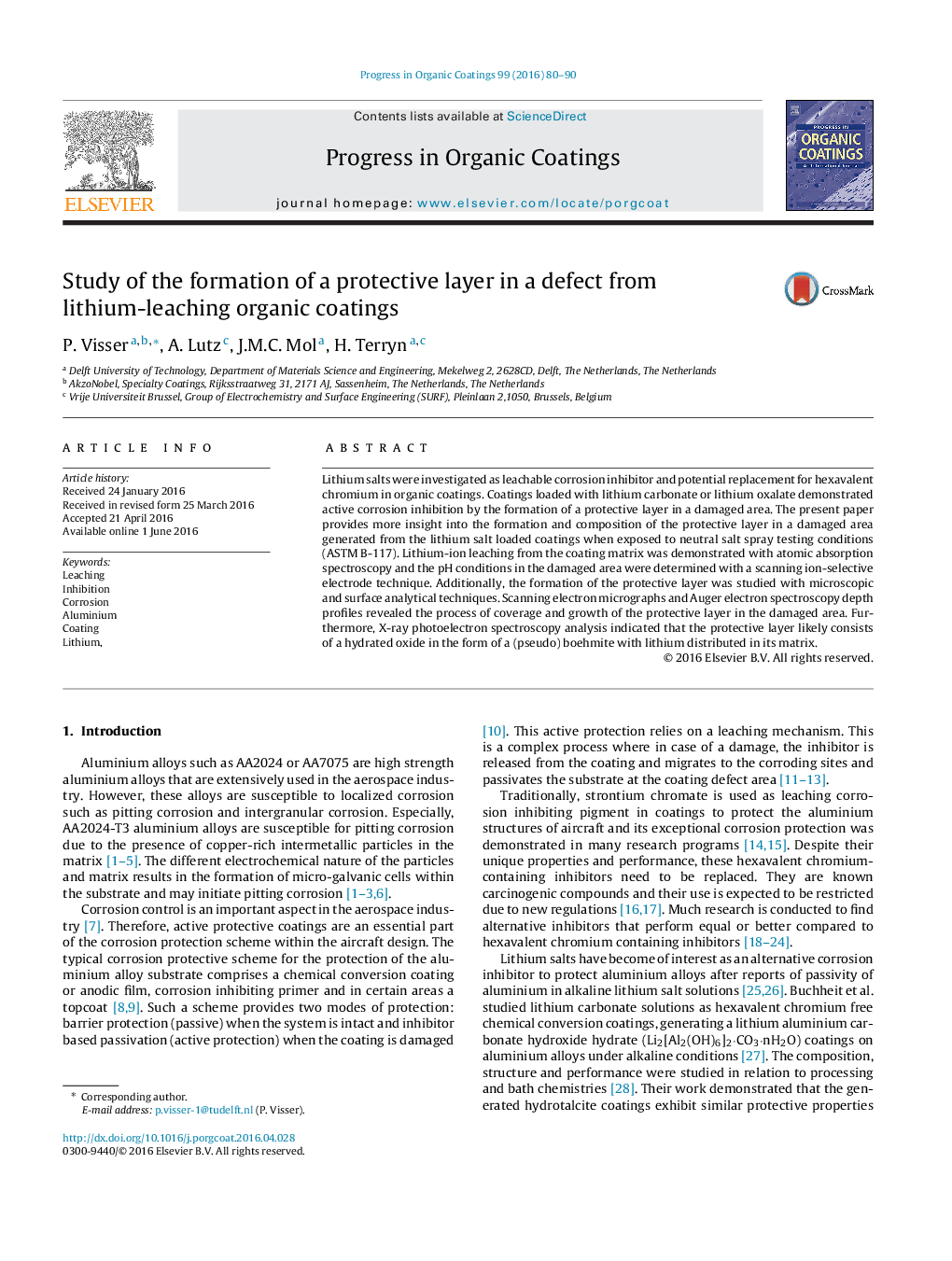| Article ID | Journal | Published Year | Pages | File Type |
|---|---|---|---|---|
| 692039 | Progress in Organic Coatings | 2016 | 11 Pages |
•The active protection mechanism of lithium leaching coatings has been discussed.•The formation of a protective layer, in a coating defect, from lithium-leaching organic coatings on AA-2024-T3 aluminium alloys was studied using microscopy and surface analytical techniques.•Leaching profiles demonstrated the immediate release of lithium-ions from the coating matrix.•The release of the lithium salts into the damaged area modified the pH to alkaline values (pH9-10).•A mechanism for the formation of the protective layer has been proposed.•Surface analysis suggests that that the composition of the protective layer is a hydrated aluminium oxide (pseudo)boehmite) containing 1–2 at.% lithium in its matrix rather than a lithium based layered double hydroxide.
Lithium salts were investigated as leachable corrosion inhibitor and potential replacement for hexavalent chromium in organic coatings. Coatings loaded with lithium carbonate or lithium oxalate demonstrated active corrosion inhibition by the formation of a protective layer in a damaged area. The present paper provides more insight into the formation and composition of the protective layer in a damaged area generated from the lithium salt loaded coatings when exposed to neutral salt spray testing conditions (ASTM B-117). Lithium-ion leaching from the coating matrix was demonstrated with atomic absorption spectroscopy and the pH conditions in the damaged area were determined with a scanning ion-selective electrode technique. Additionally, the formation of the protective layer was studied with microscopic and surface analytical techniques. Scanning electron micrographs and Auger electron spectroscopy depth profiles revealed the process of coverage and growth of the protective layer in the damaged area. Furthermore, X-ray photoelectron spectroscopy analysis indicated that the protective layer likely consists of a hydrated oxide in the form of a (pseudo) boehmite with lithium distributed in its matrix.
